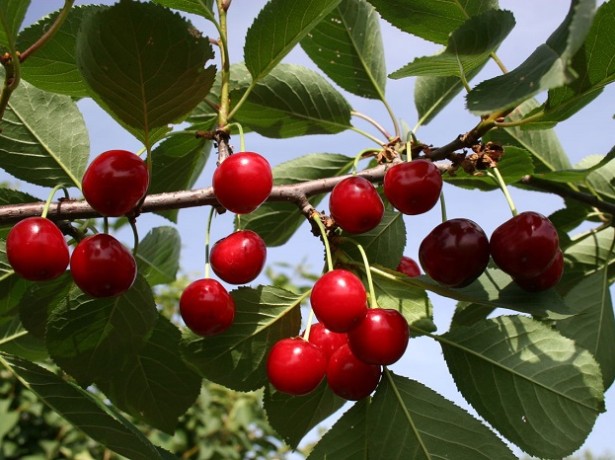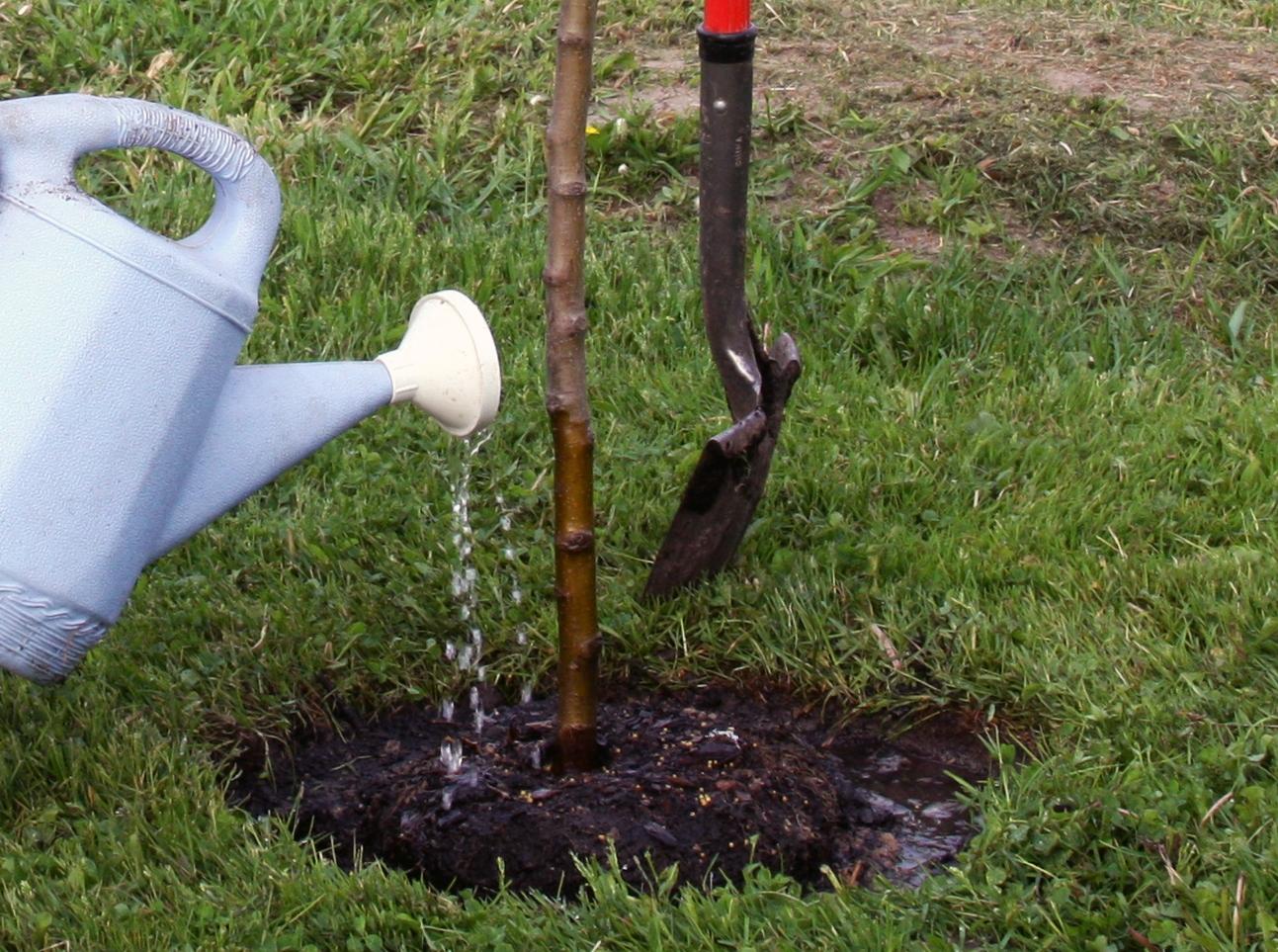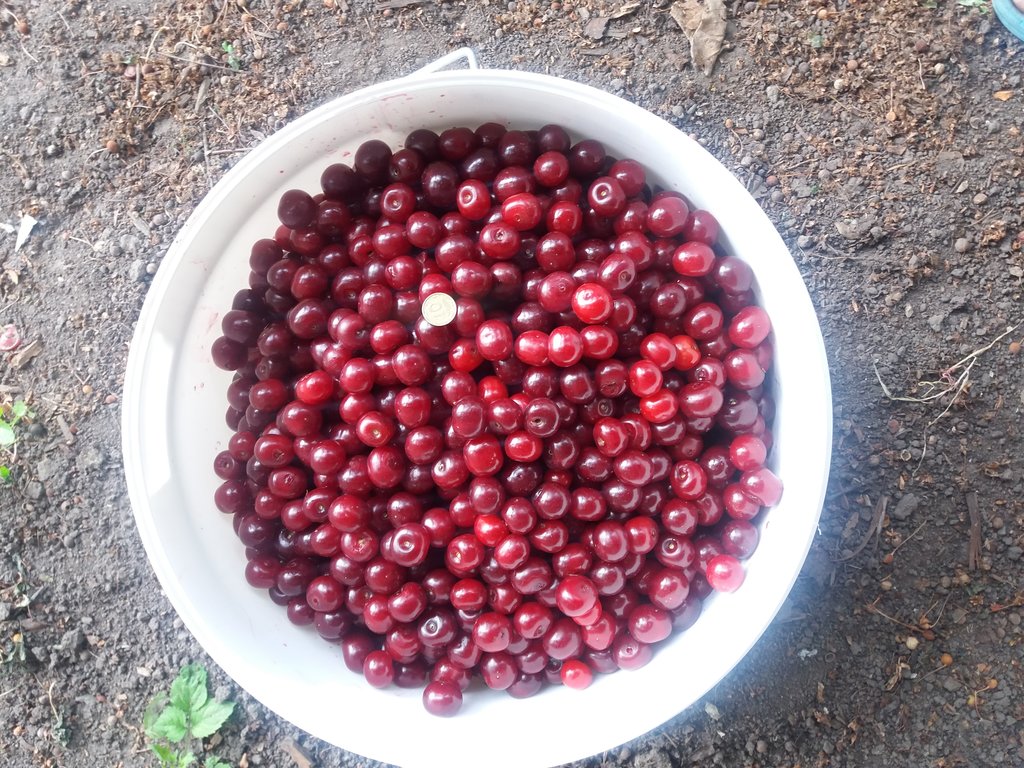Content:
Sweet cherry and cherry are related plants, the crossing of which has led to the emergence of a new kind of culture called sweet cherry or duke cherry. This tree has won its popularity among gardeners due to its large-fruited and excellent taste. But in order to get a generous harvest from this cherry-sweet cherry hybrid, it is necessary to study some features of the popular varieties and growing conditions.
Description
Many gardeners still do not have sufficient knowledge and make mistakes in caring for a hybrid, so you first need to understand what a duke cherry is.
The first sweet cherry variety in Russia was obtained thanks to the persistent selection work of Ivan Michurin and was called Krasa Severa. It was a long-awaited event for all lovers of dessert varieties of cherries. Since the resulting hybrid managed to combine all the best qualities of its progenitors. The culture was distinguished by frost resistance and large size of fruits, the weight of which reached 10 g. And the taste properties resembled sweet cherries, but at the same time the pulp was much softer and juicier. But the only drawback of the hybrid tree was the low yield in cold regions.
In the future, breeding has advanced far ahead and new varieties of hybrid trees began to appear everywhere, which, subject to the basic conditions for growing a crop, are able to bring a generous harvest and withstand adverse conditions.
Characteristics
In terms of external qualities, cherry-cherry hybrids resemble a mixture of these two crops and form a tall, strong tree, reaching a height of about 6 m. As it grows, it is necessary to form the crown, since over time it acquires a pyramidal shape.
Oblong pointed leaves are located on long petioles and resemble cherry ones in appearance. The main trunk of the hybrid is large with a smooth surface and dark brown bark, like a sweet cherry. The plant forms flower buds larger than cherry ones, and the shade of flowers is white and pale pink.
Sweet cherry has many skeletal branches that connect to the trunk at right angles. Flowering and fruiting of a culture belonging to the category of dukes occurs on bouquet branches of annual growth.
Depending on the climate, the flowering of a cherry-cherry hybrid may vary. In the middle lane, flowers bloom in the first decade of June, and in the southern regions - during the last month of spring.
Dukes belong to the category of plants of fast fruiting, so the first good harvest can be obtained already in the third year after planting in the presence of a pollinator tree. After flowering, the remaining barren flowers crumble, and the set fruits are firmly held on the branches. When ripe, the fruits remain on the tree for a long time, while their taste properties are significantly increased.
Cherry varieties
In order for a miracle cherry to bring a stable harvest every year, two basic conditions must be observed.The first of these is the correct choice of varieties, based on the climate of your region. Their difference lies in frost resistance and susceptibility to external factors.
The most common varieties of sweet cherries with a description.
| Name | Characteristic |
|---|---|
| Miracle cherry | Popular Ukrainian variety. The tree grows medium-sized and forms a rounded crown of medium density. A characteristic feature of the Miracle Cherry duke are the fruits of a dark red hue, large in size and weighing 9 g, slightly flattened. The variety is distinguished by its versatile application. The ripening period is the 2nd decade of June. |
| Rubinovka | Low-growing type of dykes, no more than 2 m in height, but at the same time it has a high yield (15 kg). Fruit ripening is the second half of the first summer month. The variety is characterized by partial self-pollination, which makes it possible to obtain a harvest annually, even at a relative distance from the pollinators. |
| Night | The variety was obtained by crossing Nord Star cherries and Valery Chkalov cherries. The variety is medium-sized, forming a wide-pyramidal crown. Possesses a high level of productivity, as well as frost resistance and drought resistance. It is mainly used for processing. The ripening period is the second half of June, the weight of one fruit is 7 g. |
| Ivanovna | It has earned its popularity due to its undemanding care and high winter hardiness. Recommended for growing in the Moscow region and regions with a harsh climate. This variety belongs to the late ripening, and therefore the harvest falls on the beginning of August. According to external data, it completely resembles a compact medium-sized cherry tree. The fruits have a deep red hue, and the weight of one is 7 g. |
| Strong | A vigorous species with a rounded crown. Differs in fruits of dark red color, weighing up to 6 g. The variety has a high storage and transportability. Duke Strong has increased winter hardiness and low susceptibility to diseases. |
| Spartan | It is a medium-sized variety of sweet cherry and cherry mixture. The main skeletal branches are connected to the trunk at an angle close to a straight line. Forms fruits on bouquet branches, the mass of one cherry is 6-6.5 g. The yield indicator of the variety is above average, but the disadvantage is wet picking of fruits, that is, without a petiole. |
| Hope | Duke belongs to the medium-sized type (3 m) with red fruits, which acquire a dark hue as they ripen. The yield per copy is 20 kg. |
| Nurse | Forms a tree of medium height with a pyramidal crown, which becomes rounded as it grows. Differs in a mixed nature of fruiting, but most of the fruits are formed on bouquet branches. The pulp is dark red with a delicate consistency. The weight of 1 sweet cherry reaches 7.8 g. Taste according to a five-point system - 4.8 points. |
| Torch | A mid-season variety, therefore the ripening period begins in the second half of June. The mass of 1 fruit reaches 6 g. The pulp is dark red, tender. The tasting score is 4.5 points. The yield per copy is 21.5 kg. |
| Gourmet | An early ripe cherry-cherry hybrid, so harvesting can be carried out in the first decade of June. The height of the tree is 3 m. The fruits are distinguished by a sweet taste with a delicate juicy texture. |
| Black Prince | Differs in a dark, almost black, fruit shade, the weight of one sweet cherry is 8.5-9 g. It is intended for growing in regions with a temperate climate. The ripening period begins in the first half of July. The height of an adult tree reaches 4-5 m. |
| Spectacular | This type of hybrid is mid-season. Forms large fragrant fruits with a pleasant sweet taste. It features a medium-sized compact tree with a fluffy decorative crown. The variety is abundantly productive and, if the conditions are met, about 40 kg of fruit can be harvested. It starts bearing fruit from 4 years after planting in a permanent place. |
The second condition for growing a duke is successful pollination.Any variety of cherries is self-fertile, therefore, for the full formation of the ovary near the hybrids, cherry and cherry pollinating trees should be stirred. This neighborhood guarantees a stable annual harvest.
The most suitable cherry varieties for pollination are:
- Lada;
- Kemskaya;
- Black large;
- Tenderness;
- Lyubskaya.
The most optimal varieties of cherries for pollination of dukes: Iput, Donchaka, Sestrenka, Annushka.
Basic conditions for successful cultivation
Planting, care and pruning of cherries is carried out subject to certain rules. Therefore, it is necessary to study them in advance in order to avoid mistakes in the future.
Any ignorance of the recommendations can not only significantly slow down the development of the tree, but also lead to death.
Sapling selection and planting dates
When choosing, one- and two-year-old trees should be preferred, which guarantees quick survival in a new place. In this case, the fathoms should have a developed root system, consisting of their main and lateral roots.
Planting should be carried out:
- in the northern regions - in early spring before bud break;
- in the southern regions - in late autumn after foliage shedding, but before the onset of permanent frosts.
Seat selection
Cherry and sweet cherry hybrids prefer to grow on soils with neutral acidity (pH 7). If this indicator deviates from the norm, it is necessary to lime the soil in advance, which will bring it closer to the acceptable one.
You can not plant sweet cherries in the lowlands where there is stagnant water, as this can lead to the death of the tree.
For the successful cultivation of a duke, you should choose an open, sunny place, protected from cold gusts of wind. The optimum distance between seedlings is 4-5 m.
The preparation of the site should be carried out at least two weeks in advance by digging it onto the bayonet of a shovel. The size of the landing pit is: width - 60 cm, and depth 70 cm.
Put the nutrient mixture on the bottom:
- 40 g of potassium sulfate;
- 3 kg of humus;
- 200 g of wood ash;
- 50 g superphosphate.
The fertilizer must be mixed with the soil and the resulting mixture must be poured into the planting hole, filling 75% of its volume.
When planting, the seedling should be placed at such a level that the root collar is 4 cm higher above the soil level.
How to care in the future
Immediately after planting the duke in a permanent place, it is necessary to monitor the humidity, preventing the roots from drying out. After rooting, the tree does not need additional watering, as it is a drought-resistant crop.
In addition, the tree needs constant crown formation, therefore, the first pruning is carried out during planting, shortening the main trunk to a height of 60 cm, and the side branches by 1/3 of the entire length. In the future, pruning should be carried out every spring, clearing the crown of thickening branches, which will improve access to sunlight. Also, when forming a tree, it is recommended to make the lateral skeletal branches heavier, thereby increasing the angle of their attachment to the trunk. This procedure helps to increase the yield of the crop and makes it easier to harvest later.
Top dressing of adult trees from the age of 3 should be limited, no more than 2 times per season. The first stage of fertilization is carried out at the end of April - at the beginning of May with an active growing season of the seedling. To do this, you can water at the root, using bird droppings at the rate of 1 liter per 10 liters, or mulch the trunk circle with rotted manure. The second fertilization should be carried out no later than late May - early June, using wood ash (200 g per 10 L of water).
Pests and diseases
Cherries are highly resistant to diseases such as coccymocosis and monoliosis, but can be affected by other fungal diseases.
- Powdery mildew. It is characterized by a white bloom on the leaves. Most often it affects young seedlings. In this case, the sheet plates are deformed, change color, and subsequently fall off.
- Fruit rot. The disease can be recognized by the characteristic rot spots on the fruit. Development occurs when the integrity of the skin is violated, due to the attack of pests or as a result of hail.
In addition to diseases, the duke can suffer in the winter from rodents that prefer to feed on their bark. Therefore, in late autumn, the trunk should be wrapped with roofing material 70 cm high.
The culture is also resistant to pests, but sometimes, in the absence of prevention, it suffers from leaf rollers and cherry flies.
Cherry is a tree that is easy to grow even for a novice gardener, but do not forget about its basic requirements. And then a generous harvest of fruits can be harvested annually.
















